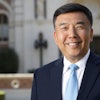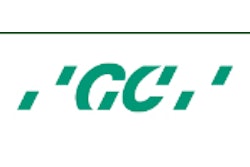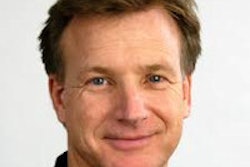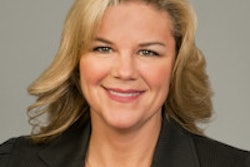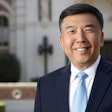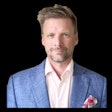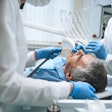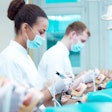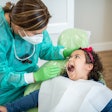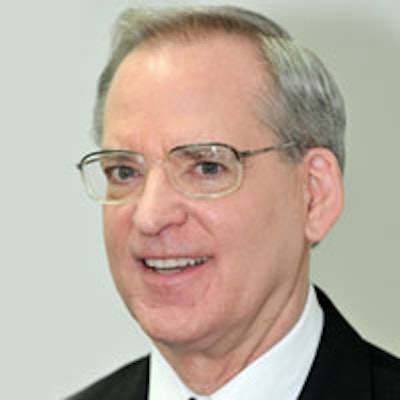
DrBicuspid.com is pleased to present the next installment of Leaders in Dentistry, a series of interviews with researchers, practitioners, and opinion leaders who are influencing the practice of dentistry and oral healthcare.
We spoke with Richard Demke, DDS, senior director of technology and new product development at Sunstar Americas. Dr. Demke received his Doctor of Dental Surgery from Marquette Dental School and Bachelor of Science in biology from the University of Wisconsin. He maintained a private practice for 10 years and created a company to commercialize dental education booklets he wrote and produced. He then moved into the commercial sector; prior to joining Sunstar, he spent13 years at GC America as vice president of research and development and two years with Siemens in the development of nuclear medicine devices.
Here Dr. Demke shares his thoughts on how the practice of dentistry has changed significantly in the nearly 40 years since he entered the field, and what new products, techniques, and protocols have fueled this evolution.
DrBicuspid.com: When did you graduate from dental school?
 Dr. Richard Demke, senior director of technology and new product development, Sunstar Americas.
Dr. Richard Demke, senior director of technology and new product development, Sunstar Americas.
Dr. Demke: In 1975. This summer marks the 38th year since I graduated, and I've seen tremendous changes. After graduation, I went into private practice for 10 years in central Wisconsin. We had a huge general practice and treated a lot of children. I did more dentistry the first week out of dental school than the whole time I was in dental school. I went into practice with an older dentist, and the very first day we had 25 patients. We had 25 patients a day Monday through Saturday, and we also practiced half of Sunday. We were booked like that for the first six weeks. My wife was my dental assistant.
When did you transition from private practice to the corporate world, and why?
When I first got into private practice, I was incredibly busy, and we were booked like that for several years. And the practice just grew and grew, and eventually I got burned out. During this time, I also started my own company, Professional Healthcare Publications, to commercialize a book I wrote for patients, called It's Your Mouth. I had so many dental patients I didn't have enough time to spend with them and talk about all the things they should know and could do. And many of them had very poor oral health, so I found myself trying to explain everything I learned in dental school to people who didn't really understand it. That's what prompted me to write the 32-page booklet, which I sent home with them. We eventually sold about 40,000 copies.
But one day when I was 35, I woke up and decided to just sell everything and start over. My wife and I had developed a housing subdivision, started the publication company, and were still practicing full time. At this time, we decided to take a break and reassess our life. So we sold everything and took a year off, then moved to Kansas City, where I started with Chameleon Dental Products (the company later became Mirage). This was in early 1986, at the beginning the cosmetic craze. I was with them for two years, developing new products and techniques and conducting seminars all over the U.S. to train dentists on the emerging veneer technology.
After that, I joined COE/ICI, which was eventually sold to GC and became GC America. I was with GC America for 13 years as vice president of R&D.
Then at age 50, I found myself at another crossroad and decided to take a break. But then 9/11 happened, and I realized that morning that if the world didn't completely blow up, I would go back to work -- just not in dentistry. A few months later, I got an interview with Siemens in their nuclear medicine division. Now realize -- I knew absolutely nothing about nuclear medicine. But when I got home from the interview my answering machine was blinking and I was asked if I'd like to start work the next Monday. I ended up spending two years there as director of regulatory affairs and also a member of the new product development group. It was a phenomenal experience.
Then, Sunstar offered me the director of new product development position, so I decided it was time to go back to doing what I know best.
What are some of the most significant changes in dentistry you've seen during the last 40 years?
I was recently lamenting with another (older) dentist about the changes we have seen, and it occurred to me that almost everything I was taught in school has changed, been eclipsed by new technology, or been found to be inadequate. So I started to reflect on some of the changes I've seen since graduating from dental school. I was in one of the first classes at Marquette Dental School that was taught four-handed sit-down dentistry and routine use of the high-speed handpiece. Also, we now embrace cosmetic dentistry, which you couldn't even talk about back then. And implants were just a twinkle in somebody's eye.
Here are some of the other significant changes the industry has seen:- Computers in the dental office
- Bonded restorations
- Improvements in composite resins, adhesives, bonding agents, and light curing devices
- Moving away from amalgam to composite resin restorations
- Bleaching whitening
- Focus on asepsis, wearing gloves, masks, sterilization, etc.
- Digital radiography
- Oral photography and intraoral cameras
- Tooth strengthening/remineralizing agents
- Oral/systemic health link
- Expandable use of fluoride and fluoride varnishes
- Lasers
- Bone/tissue regeneration
- CAD/CAM restorations
- Magnification loupes
- Site-specific antibiotics
- Glass ionomers
- Realizing there is a genetic component to periodontal disease
- Adult orthodontics
- New/improved impression materials
- Automated endodontics
- Advertising/promotion of dental practices
- Ultrasonic scalers
- Women in dentistry (When I went to school, there were 127 students in our class and only one women.)
Dentistry has changed so much in the past 40 years, and it's poised to continue well into the future. If you look at change on a year-to-year basis, it doesn't look like much happens, but if you look at it over a 20-, 30-, or 40-year span, there have been phenomenal changes. When I look back, I can't believe we practiced dentistry like we did. And I expect rapid change to take place over the next 20 years.
What are some of the most exciting changes you see on the horizon?
Many marvelous researchers are working on an array of improvements right now that will continuously change the face of dentistry and the way we practice for quite some time.
Here are some of the new technologies and product improvements I think we will see in the not-too-distant future:
- Focus on treating gingivitis and periodontal disease with anti-inflammatory products rather than antibiotics
- Grow natural teeth rather than placing metal implants
- Saliva diagnostics
- New tooth remineralizing technologies
- Improved xerostomia products
- Expanded use of probiotics
- Antiadherent plaque reduction products
- Improved site-specific antibiotics
- Genetic treatment of oral diseases
- Improved bone regeneration materials and techniques
- Improved oral hygiene cleaning devices
- Advances in photodynamics
- Screening for medical conditions (such as diabetes) in the dental office
From the sounds of it, the dental industry appears to be moving away from "drill and fill" toward a more preventive approach to oral care.
That is a good way to phrase it, and I hope it's true. After 10 years of dental practice and thousands upon thousands of dental procedures, I came to the realization that patient education and prevention needed to be improved. That's what motivated me to join the dental industry.
Over the next few years, I hope to see a significant shift toward prevention. New products and techniques are being developed that should help reduce the prevalence of decay and periodontal disease. But I feel the bigger need is to take the time to teach children to brush and floss when they are young, so it becomes a habit. Within several generations, we could significantly reduce the amount of oral disease if we simply put our focus on education and prevention practices.
